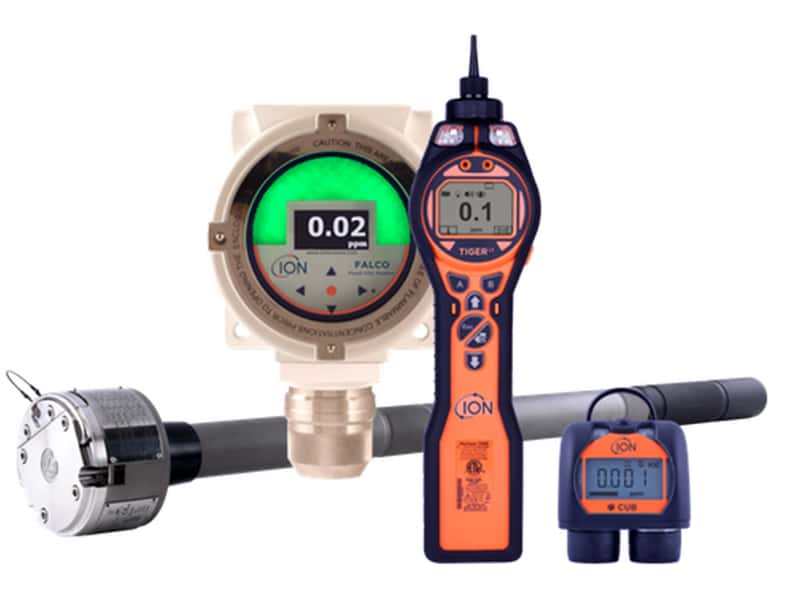
The versatile nature of a PID instrument makes it an indispensable device for the emergency services in response to a HAZMAT incident.
The ability of a photoionisation detector (PID) to measure low levels of volatile organic compounds (VOCs) makes them a vital tool in the decision making process following a hazardous materials (HAZMAT) incident. In the immediate aftermath of an accident, chemical spill or other incident involving hazardous materials there are many unknown factors. The speed at which these can be identified is key to the response, containment and clean-up effort. In the event that the HAZMAT materials are VOCs the sensitivity of photoionisation detection to measure low (parts per million – ppm) levels that can be toxic but not detectable by standard lower explosive limit (LEL) sensors make it a versatile tool for evaluating the dangers in an emergency response situation.
The almost instantaneous response of a PID instrument ensures that if conditions change with regard to disbursement of toxic gas or vapour the perimeter can be adjusted accordingly.
PIDs For HAZMAT
The versatile nature of a PID instrument makes it an indispensable device for the emergency services in response to a HAZMAT incident.
- Preliminary Personal Protective Equipment (PPE) Assessment– Use of a PID instrument can greatly assist and speed up the decision process in determining the presence of toxic gas or vapours.
- Leak Detection– When gas or vapour escapes it disperses and becomes diluted by the air around and can be difficult to detect. This is where the PID instrument excels.
- Perimeter Establishment and Monitoring– The almost instantaneous response of a PID instrument ensures that if conditions change with regard to disbursement of toxic gas or vapour the perimeter can be adjusted accordingly.
- Data logging– A PID instrument has the capacity to record information with either positive or negative results at set intervals or continuously.
- Contamination of Spill– PID instruments also ensure that First Responders can identify and importantly eliminate any liquids present.
- Clean-up and Decontamination– After the initial aim of containing the spill, a PID device can then be used to establish the level of contamination of a First Responder themselves.
- Remediation– Concentration levels for remedial action are set by individual countries and PID instruments offer a quick and effective way of determining whether an area is now free from contamination or requires further attention.
Conclusion
In conclusion, one of the great benefits of PID instruments in a HAZMAT response situation is that whilst they are not always selective in terms of gas, they are small continuous monitors that provide an immediate response for anyone that uses them. PID instruments are ideal when the threat of a compound’s toxicity is greater than that of its risk of explosion and the accuracy and rate of response are of paramount importance. This makes them an invaluable tool in the First Responders resources from beginning to end.











